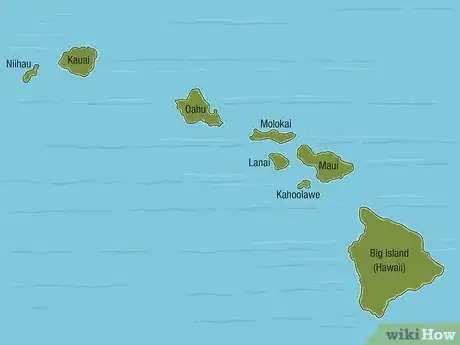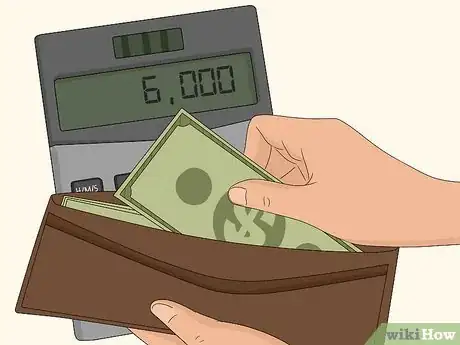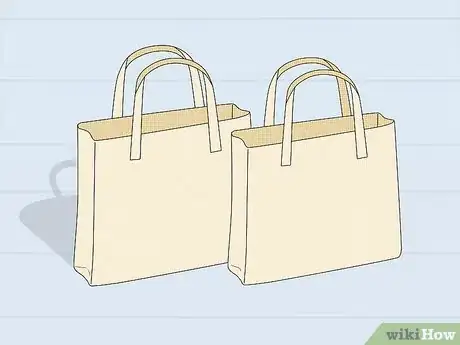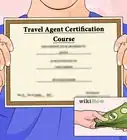This article was co-authored by wikiHow staff writer, Eric McClure. Eric McClure is an editing fellow at wikiHow where he has been editing, researching, and creating content since 2019. A former educator and poet, his work has appeared in Carcinogenic Poetry, Shot Glass Journal, Prairie Margins, and The Rusty Nail. His digital chapbook, The Internet, was also published in TL;DR Magazine. He was the winner of the Paul Carroll award for outstanding achievement in creative writing in 2014, and he was a featured reader at the Poetry Foundation’s Open Door Reading Series in 2015. Eric holds a BA in English from the University of Illinois at Chicago, and an MEd in secondary education from DePaul University.
There are 18 references cited in this article, which can be found at the bottom of the page.
This article has been viewed 23,372 times.
Learn more...
When it comes to tropical vacation destinations, it’s hard to beat Hawaii. From the pristine beaches to the beautiful weather, Hawaii is arguably the best place in the world for a laid-back getaway. But with so many options, it’s easy to feel like you’re overlooking something. Luckily, we’ve done the research and we’ve got you covered—from the basic dos and don’ts to what every tourist needs to pack for a trip to aloha country.
Steps
Choose the islands you want to visit.
-
Set aside roughly 5-7 days for each island you want to visit. It takes time to travel between islands since you can’t drive between them, and each island is bigger than you’d think. As a result, it’s probably best to minimize the number of islands you visit if you aren’t planning an extended stay. Each island has its own draws and they’re surprisingly unique, so choose a few islands based on how long you’re staying. Your options are:[1] X Research source
- Oahu – This is where Honolulu and the infamous Waikiki beaches are located. Oahu is the busiest island, which is great if you want some busy nightlife to pair with lovely beaches.
- Kauai – Home to Koke’s State Park and Waimea Canyon, this island is ideal if you want to hike, camp, and take in Hawaii’s natural beauty. Many visitors consider Kauai to be the “prettiest” island.
- Big Island (Hawaii) – Beaches, jungles, and volcanoes. If you want to lounge on an uncrowded beach, this is a great option!
- Maui – Maui tends to be a little more touristy than the other islands (except Oahu, maybe), but it’s very balanced. There’s a good mix of shopping, restaurants, beaches, and pristine wilderness.
- Molokai, Lanai, Niihau, and Kahoolawe – These smaller islands are the least popular among tourists, but there some secluded resorts worth looking into if that’s what you want!
Save up ahead of time for the trip.
-
Hawaii can be one of the pricier vacation destinations, so save early! Basic goods and services tend to be pretty expensive on the Hawaiian Islands, and Hawaii isn’t particularly close to any larger landmass, so airfare tends to be costly. If you don’t already have money set aside for the trip, start saving now! You’ll thank yourself by the time the trip comes around.[2] X Research source
Bring comfortable, casual clothing for a tropical climate.
-
It might rain, but it will basically always be 75–85 °F (24–29 °C). You won’t need a winter coat or thick sweat pants for this trip—even late at night.[5] X Research source Prioritize shorts, T-shirts, comfortable shoes, sun dresses, and other lightweight clothing.[6] X Research source
- If you’re doing any mountain climbing or early-morning boating, bring a sweater and jeans. It might turn into sweater weather for a bit if you plan on doing either of these activities.
- Bring at least one set of fresh clothes for each day, but pack some extra socks and underwear. You may get sweaty out there during the day, and you’ll be happy to have a few extras.
- Unless you plan on doing a lot of fine dining, you don’t need any cocktail dresses, high heels, suits, or Oxfords. Keep things cool, comfy, and colorful![7] X Research source
Pack any beach gear you’ll need.
-
Pack your swimsuit and a nice set of shades. Even if you normally aren’t a huge fan of the beach, Hawaii’s beaches really are something else and you’ll likely spend plenty of time in the sun. Bring your swimsuit, some sunglasses, and flip flops so that you don’t have to buy any of that stuff there where it will be more expensive. A wide-brimmed sun hat or visor is also essential.[8] X Research source
- You can buy sunscreen when you land, but you can pack it if you’d like. You should bring some lip balm with sunscreen in it, though.
- If you have any snorkeling gear or goggles, by all means bring it!
- Bring swim shoes! Outside of Waikiki, many of Hawaii’s shores are rocky—the islands are composed of volcanic rock after all.
- You can rent boogie boards and surfboards at any of the major beaches.
Bring hiking gear if you’re doing nature walks.
-
A lot of Hawaii is rocky, rough terrain, so plan accordingly. For most hikers, that means a pair of thick, sturdy, hiking shoes or boots. You’ll likely want to bring a big water bottle for your extended walks in the heat. It may not get super cold, but you may want long sleeves and hiking pants to protect your skin from the sun and insects.[9] X Research source
- You may want a hiking pack and camping gear as well if you plan on spending an extended period of time out in the wilderness!
- Consider packing some binoculars if you’re hiking in any areas where the sights extend for miles out ahead of you or you’re a birdwatcher.
Tuck a few canvas totes in your suitcase.
-
Plastic bags are banned in Hawaii, so bring lightweight storage. You need something to carry your beach gear, snacks, water, or guidebooks. You won’t be offered plastic bags anywhere on the Hawaiian Islands, so plan accordingly and bring something easy to carry and light to carry you stuff.[10] X Research source
- If you bring a big bulky backpack, your back may get sweaty as you’re walking around. Canvas athletic bags and smaller lightweight backpacks are going to be better options in most cases.
Book a rental car if you plan on exploring outside a city.
-
If you want to explore at all, you’ll need to reserve a rental car. You can rely on taxis and rideshare services if you’re just going to the airport or taking short trips in the city, but most folks like to explore whatever island they’re staying on. You can (and should) go car-free in Honolulu, but you’ll want to rent a car anywhere else if you want to poke around. Reserve a car in advance so that you aren’t stuck without a way to get around![11] X Research source
- Book your rental cars at least 3-4 months in advance. Rental car companies can run out of stock, so the earlier the better.
- A rental car will typically run $100 or so per day. If you’re staying outside of a city, it’s typically important to have wheels, unfortunately.[12] X Research source
- Unfortunately, most of the Hawaiian Islands don’t have particularly good public transit.[13] X Research source There are areas where biking is a viable option, but it’s generally pretty difficult to bike long distances.
- Hotels will often offer pick up and drop off services to major tourist locations depending on where you’re staying.
Bring plenty of entertainment for the plane.
-
Regardless of where you’re coming from, it’s a long flight. Pack some extra external batteries or chargers for your laptop, e-reader, or phone, and bring plenty of reading material. If possible, book a flight where there’s going to be in-air entertainment (Hawaiian Airlines has TVs on most flights). It’s typically at least a six-hour flight, so plan accordingly.[14] X Research source
- You may be the “I hate layovers” type normally, but breaking your flight up with layovers and connections can actually make it more comfortable for you!
- If there were ever a trip where it’s worth upgrading your seat, this would be it.
Buy sunscreen and bug spray when you land.
-
If you didn’t pack them, pick these up once you’ve landed. The sun can be pretty intense in Hawaii, regardless of where you’re staying. Before you go outside anywhere, you’ll need to put on sunscreen. The insects on Hawaii can be a little intense for main landers and tourists alike. Bring bug spray with you wherever you go so that you can keep the creepy crawlies off of you.[15] X Research source
Pick 1-2 activities or events for each day.
-
Do some research and choose a few things you want to do. If you have your heart set on a certain hiking trail, or there’s a waterfall you really want to visit, start by setting time aside that. Then, hop online and research what’s available on the islands you’re staying at. Build your itinerary for the trip so that you have at least one thing planned for each day of your trip.[18] X Research source
- Book tickets for any tours or activities that require them at least 60 days in advance.
- There are so many beautiful volcanoes, waterfalls, and hikes to be found on each island.
- Take part in the Hawaiian/Polynesian culture at some point. Go to a luau, pig roast, or traditional dance event!
- Get some surf lessons at some point! Hawaii is a world-class surfing spot, and if you’re going to try surfing anywhere, make it Hawaii.
Set time aside for relaxation and exploration.
-
Leave plenty of open space on your itinerary to chill out. It’s really easy to over-plan in Hawaii. There are neat beaches, beautiful sights, and cool tiki bars hidden all over the place. Leave time in your schedule to go wherever your heart desires. Hawaii is all about keeping things relaxed, so take it easy![19] X Research source
- If you book tons of tours, events, and fancy dinners, you won’t have any time set aside for just sitting out in the sand or wading in the ocean. For most folks, that’s the best part of Hawaii!
Check surf reports before you hit the water.
-
Waves and tides can be powerful in Hawaii, so respect the ocean. You must check the surf reports on days you plan on going out into the water. Local surf reports are readily available at basically every hotel and tourist spot. Do not neglect them! If it’s unsafe to swim, don’t go out.[20] X Research source
- Drowning is the leading cause of death for tourists in Hawaii. You may be used to calm waters where you live, but you really must get in your mind now that Hawaiian waters are to be respected.[21] X Research source
Hawaii Packing List
Warnings
- Hawaii has more endangered or threatened species per square mile than any other place on the planet.[24] X Research source If you come across any unique wildlife, do not touch or interfere with it. It’s likely illegal.⧼thumbs_response⧽
You Might Also Like


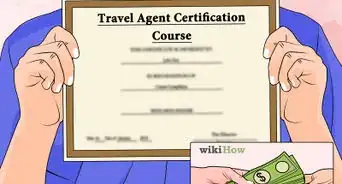






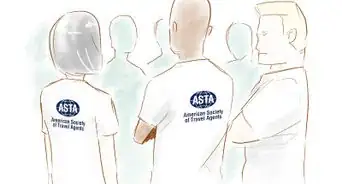
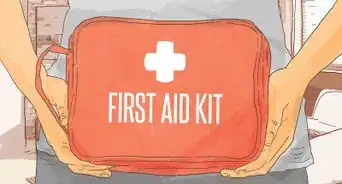



References
- ↑ https://travel.usnews.com/rankings/best-hawaiian-islands/
- ↑ https://www.newsweek.com/most-expensive-place-live-us-hawaiitoilet-paper-costs-more-628977
- ↑ https://www.govisithawaii.com/2012/08/29/how-much-for-a-trip-to-hawaii-budget-calculator/
- ↑ https://www.govisithawaii.com/2012/08/29/how-much-for-a-trip-to-hawaii-budget-calculator/
- ↑ https://www.gohawaii.com/trip-planning/faq
- ↑ https://www.gohawaii.com/trip-planning/weather
- ↑ https://theculturetrip.com/north-america/usa/hawaii/articles/packing-guide-what-to-take-on-a-hawaii-trip/
- ↑ https://theculturetrip.com/north-america/usa/hawaii/articles/packing-guide-what-to-take-on-a-hawaii-trip/
- ↑ http://www2.hawaii.edu/~turner/hoo/hoo-ess.htm
- ↑ https://health.hawaii.gov/wic/files/2020/05/Mandatory-Plastic-Bag-Ban.pdf
- ↑ https://www.hawaii-guide.com/content/posts/hawaii_car_rental_tips
- ↑ https://www.govisithawaii.com/2012/08/29/how-much-for-a-trip-to-hawaii-budget-calculator/
- ↑ https://www.hawaii-guide.com/content/posts/hawaii_car_rental_tips
- ↑ https://www.travelandleisure.com/airlines-airports/33-ways-to-survive-a-long-flight
- ↑ https://www.gohawaii.com/trip-planning/travel-smart/safety-tips
- ↑ https://www.gohawaii.com/trip-planning/travel-smart/safety-tips
- ↑ https://www.hawaiitourismauthority.org/covid-19-updates/traveling-to-hawaii/hawaii-sunscreen-law/
- ↑ https://gowanderly.com/best-island-visit-hawaii/
- ↑ https://www.ajc.com/travel/how-create-perfect-hawaii-beach-getaway-oahu-north-shore/wKxsUrQYvsK3cQT5094aFJ/
- ↑ https://www.gohawaii.com/trip-planning/travel-tips
- ↑ https://www.civilbeat.org/2019/07/drownings-are-on-the-rise-as-tourism-surges-in-hawaii/
- ↑ https://www.hawaii-aloha.com/blog/2017/10/27/10-things-locals-want-you-to-know-before-coming-to-hawaii/
- ↑ https://www.washingtonpost.com/travel/tips/hawaii-travel-covid-test-requirements/
- ↑ https://www.gohawaii.com/trip-planning/travel-tips
About This Article

